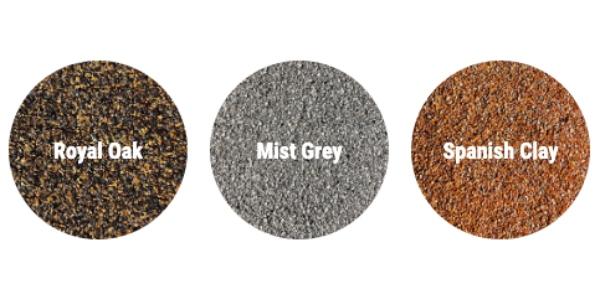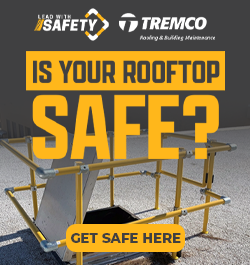California’s Title 24 – What it Means

By Trevor Underwood, DECRA.
Have you heard of Title 24? Learn more about California’s initiative to improve energy efficiency in building standards.
As pollution and uncertainty in power grids during the late twentieth century began to grow, the state of California Building Standards Commission created Title 24 of the California Code of Regulations in 1978 to combat the environmental changes around them.
Title 24 requires California residents to meet minimum energy efficiency standards in new and altered buildings. The regulations cover a broad range of building systems including lighting, HVAC, hot water heating and natural gas to name just a few. By establishing minimum energy standards for the design and construction of buildings in California, Title 24 aims to:
- Reduce energy costs.
- Decrease greenhouse gas emissions.
- Increase the reliability and availability of electricity.
- Improve air quality.
- Reduce the impact on the environment.
How Title 24 affects residential roofing
Title 24 regulations differ based on which of the 16 California climate zones your home is located in.
Climate zones are defined by geographic borders that consider average temperatures and the number of cool or hot days. Established by the California Energy Commission and updated every three years, each climate zone has its own set of Title 24 regulations, requirements and energy standards.
For example, homes in climate zones 10-15 are required to use certified roofing products known as cool roofs for new construction, or if more than 50% of the roof is replaced.
For homes in climate zones 1-9 and 16, there are no cool roof requirements.
What are the cool roof requirements of Title 24?
The Cool Roof Rating Council (CRRC) is the sole authority recognized by the California Energy Commission for certifying roofing products as “cool roof” materials.
The CRRC rates roofing products and systems by measuring two important thermal properties, solar reflectance (SR) and thermal emittance (TE). Both of these thermal properties are measured and assigned values from 0 to 1. The higher the value, the cooler the roof. By CRRC standards, the minimum solar reflectance (SR) value is .20 and the minimum thermal emittance (TE) value is .75.
Solar Reflectance (SR): The roofing material’s ability to reflect solar energy back into the atmosphere. Title 24 also rates SR after three years, a value known as aged solar reflectance.
Thermal Emittance (TE): The ability of the material to radiate absorbed heat up and away from the house.
There is a third “cool roof” qualifier known as the Solar Reflective Index (SRI), which is calculated through a formula that combines the SR and TE values of a roofing product.
“The SRI alternative is useful when a particular product exceeds the Energy Standards requirement for either the aged solar reflectance or the thermal emittance but does not meet both requirements.” — Energy Code Ace Resources
There is an exception to Title 24’s cool color requirements, however.
SECTION 150.2(b)1Hi states that any roofing product may be used if “airspace of 1” is provided between the top of the roof deck to the bottom of the roofing product.
While this sounds complex, it basically means that if a roofing product is installed over battens, it does not need to be certified as a cool roof. The batten installation technique improves energy efficiency so well that Title 24 makes a notable exception to the cool color rules.
Battens are a simple grid of 2x2 wood strips that create a continuous airspace of at least 1” between the roofing material and the roof deck.
This vital airspace increases thermal emittance tremendously by allowing heated air between the deck and the roofing materials to escape up and away from the house through ridge vents at the highest point of the roof. Battens provide a self-regulating “heat elevator.” In other words, the hotter the air, the faster it rises through the air space and away from the home.
What California homeowners should look for in a roof
Aside from the energy-efficiency requirements of Title 24, homeowners need to factor in that California has strict environmental and building codes due to its varied climate conditions, including earthquakes and wildfires.
If your roofing project takes place in 2023 or later, homeowners may need to find a roofing product that works well with solar installations. Effective January 1, 2023, the California Energy Commission now requires solar panels and battery storage in new commercial buildings and certain residential buildings. This is an important consideration since solar panels can last 25 years or more, so it’s important to find a roof with a long lifespan that won’t need to be replaced before the solar panels.
With all these requirements and regulations in place, finding the best roof for a California home can be a headache. Fortunately, an energy efficient DECRA metal roof can check all the boxes.
- Fire: The highest class A rating for fire.
- Earthquakes: Lightweight DECRA stone-coated steel provides extra shear strength to the roof deck to withstand tremors in seismically active regions.
- Hail: The highest Class 4 impact rating for hail or debris impact.
- Wind: DECRA roofs are engineered and approved to withstand hurricane-force winds.
- Longevity: Lasts two to three times longer than traditional roofing materials, such as asphalt shingles which need to be replaced as often as every 12 years, making metal roofs one of the best roofing materials to pair with solar.
- ROI: A metal roof can increase home value by up to 6%.
The best part is that DECRA’s stone-coated metal roofing products come in a wide variety of colors and textures to suit any style. DECRA has an architecturally diverse variety of roofing products that meet or exceed the requirements of Title 24, including our profiles that are installed on battens:
As well as three CRRC-approved cool colors that are available across all DECRA profiles:

Original article source: DECRA
Have a question? AskARoofer.
Find your local roofing contractor the RoofersCoffeeShop® Contractor Directory.













Comments
Leave a Reply
Have an account? Login to leave a comment!
Sign In